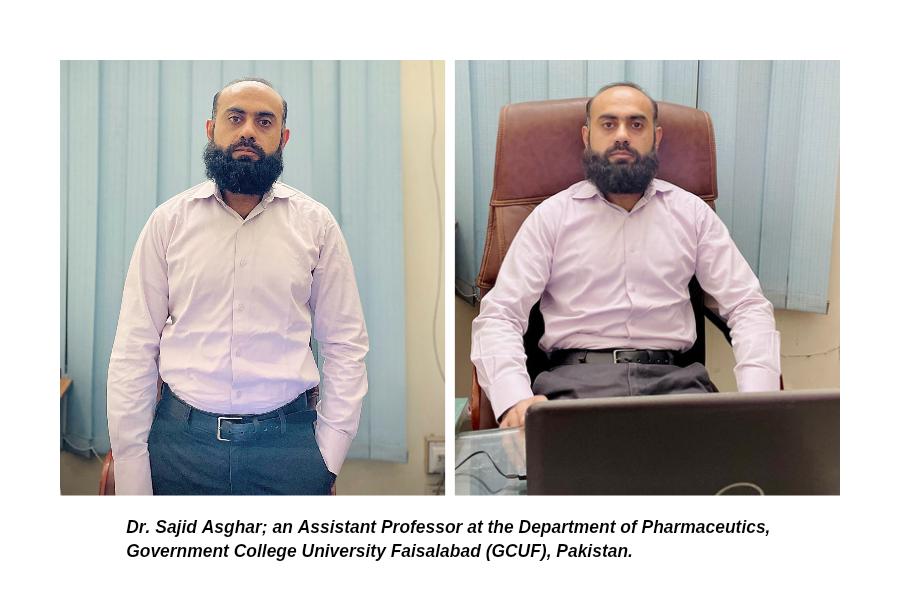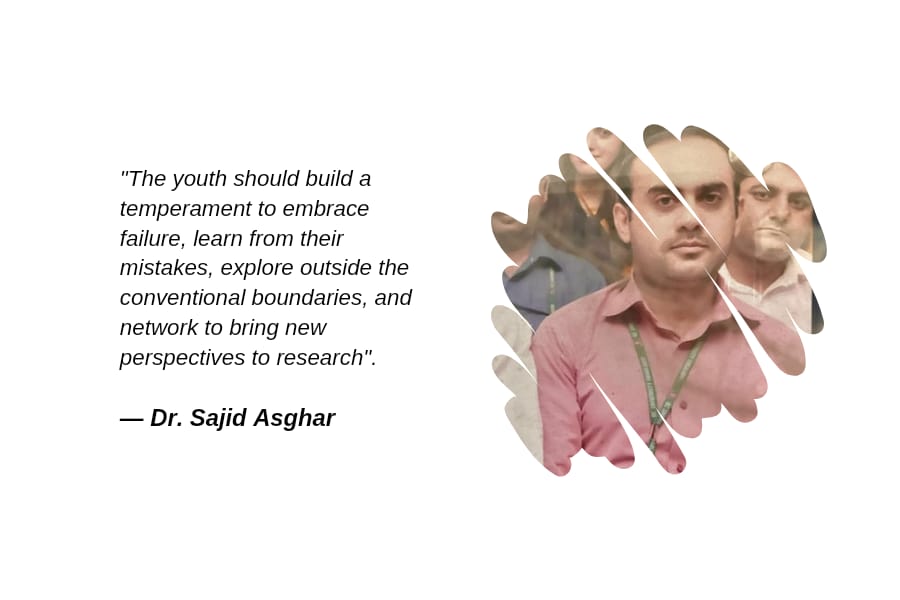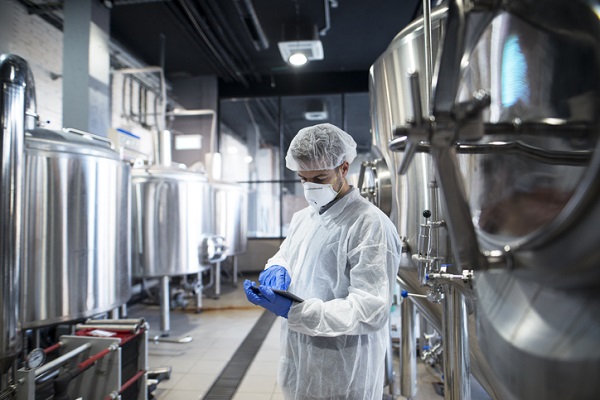“As to diseases, make a habit of two things — to help, or at least, to do no harm”. ~ Hippocrates
The pharmaceutical industry is thought to provide relief to patients. Still, it, in turn, intentionally or unintentionally, is providing a source for diseases, changing disease patterns and antibiotic resistance, and raising concerns about its long-term effects on human health. Recently, the term ‘Carbovigilance’, coined by Dr Ray and coworkers, has surfaced to highlight the impact of the pharmaceutical industry on greenhouse gas emissions and underscore the importance of curtailing the global pharmaceutical footprint. We had the opportunity to interview a formulation researcher, Dr Sajid Asghar, concerning the environmental impact of the pharma industry in this regard.

Dr Sajid Asghar is currently an Assistant Professor at the Department of Pharmaceutics, Government College University Faisalabad (GCUF), Pakistan. He has significant domain knowledge in the design of modern drug formulation approaches and has made contributions in peer-reviewed publications and book chapters. Dr Sajid Asghar supervises postgraduate students as the primary supervisor and teaches drug delivery courses to undergraduate and postgraduate students at the Faculty of Pharmaceutical Sciences, GCUF. Moreover, he is also involved in the evaluation of his Master’s and PhD thesis in Pharmaceutics as a jury member at the national level.
Dr Sajid Asghar completed his PhD in Pharmaceutics (December 2014) from China Pharmaceutical University, funded by a scholarship from the Higher Education Commission Pakistan (HEC). In 2015, he designed an Intrinsic Principles of Drug Delivery course for the PhD Pharmaceutics programme at GCUF that incorporated the physiological, anatomical, and pathological factors for designing drug delivery systems.
Here are a few excerpts from his recent conversation with Sadia Hakim, who is an independent science and non-fiction writer based in Punjab, Pakistan.
Sadia: Let us know about your research work on novel drug formulation.
Dr Sajid: Since 2017, I have successfully completed three research grants aimed at designing novel drug formulations for improved therapeutic outcomes as a Principal Investigator. It enabled me to further develop my quantitative and conceptual skills in analyzing the problems of delivering drugs to a specific site and at a desired rate. Other than the exciting research findings, the students I have trained have gone on to secure different positions and funding for the advancement of their careers.
I am also engaged with international researchers. Since 2015, I have been working with Dr. Yanyu Xiao from China Pharmaceutical University on research proposal development, data analysis, and manuscript preparation.
In 2021, I collaborated with Prof. Thierry Vandamme from the University of Strasbourg, France, for a joint publication in Drug Delivery Reviews on the role of phytochemical-loaded nanotechnological products against microbial resistance and biofilms. Recently, I received the Seal of Excellence for a research proposal submitted to EC under the Horizon Europe Marie Skłodowska-Curie Actions Call 2022 with INSTITUTE REGIONAL DE ONCOLOGIE (IASI), Romania.

Sadia: What’s the significant difference you observe in the pharma industry of Pakistan compared to other countries?
Dr Sajid: The Pakistani pharmaceutical industry relies on the business of generic products, which indicates a lack of effort in the research and development of new drug products, especially biotechnological therapeutic products. On the other hand, the international pharmaceutical industry invests in novel drug modalities, improved processing methodologies, and the development of new materials for pharmaceutical applications.
The pharmaceutical industries of developed countries adhere to strict quality control measures, and the relevant regulatory framework imposes stringent standards. In contrast, the regulatory framework in Pakistan has not been able to force the local industry to adhere to the international quality standards and compliance of Good Manufacturing Practices.
Due to the economic dynamics of the local market, the Pakistani pharmaceutical industry lacks the infrastructure and the technological capabilities for innovative and cutting-edge research in pharmaceutical manufacturing. In addition, owing to the meagre support by the Government in R&D, there is a lack of academia-industry bridging in the local pharmaceutical sector to foster innovation and meet global quality standards.
Sadia: What are your thoughts on the Carbon Footprint of the pharma industry? Can you share your insights on the potential of drug product design in reducing the environmental impact of medicines?
Dr Sajid: Due to the critical role of pharmaceutical products in the healthcare sector in fighting chronic diseases and pandemic outbreaks, very little attention has been paid to the environmental impact of the pharmaceutical industry. In the last few years, reports have surfaced to identify the massive environmental impact of the pharmaceutical product cycle. Multinational pharmaceutical industries have begun to realize the threat and are committed to Green Products and Processes by the end of 2050.
A drug product in the market comes after a series of complex and energy-intensive processes, such as extraction of medicinal ingredients from natural sources or their chemical synthesis and purification, dosage form manufacturing using various pharmaceutical adjuvants obtained through different sources and complex processes, packaging, distribution, utilization, and disposal.
Sadia: Would you provide some ideas on reducing the Carbon Footprint in the pharmaceutical industry as a formulation scientist?
Dr Sajid: The environmental impact of pharmaceutical manufacturing can be mitigated by rationalizing the drug product design, such as promoting the use of biodegradable materials for drug manufacturing, lowering organic solvent consumption, avoiding high energy processes, using statistics (such as Quality by Design; QbD) and artificial intelligence (AI) tools for improving manufacturing process efficiency, designing combination drug products, and rationalizing the healthcare practices. Governments should offer subsidies to the pharmaceutical industries for incorporating Green Practices in their product cycles to compensate for the operational cost and the associated revenue reduction.
The use of smart pharmaceutical excipients offering multiple roles in the manufacturing processes could also help in the aim of achieving a sustainable environment. For example, using natural therapeutic oils rather than synthetic oils or fats in the preparation of pharmaceutical topical emulsions or creams will allow a reduction in the dose of the medicine due to the therapeutic activity of the natural oil.
Similarly, synthetic polymers used in the design of tablets and matrices could be replaced by biodegradable polymers obtained from plants and microbes that would assist in the disposal of unused or expired pharmaceutical products more energy-efficiently.
Sadia: What do you think about the role of unnecessary prescriptions in contributing to the Carbon Footprint of medicines?
Dr Sajid: The unethical practice of overprescribing medication, often overlooked, is not only harmful to the health of patients and the dignity of the medical profession, but it also poses a significant threat to the Earth’s environment. Each stage of pharmaceutical manufacturing, from the extraction of raw materials to manufacturing, distribution, consumption, and eventual disposal, involves energy-intensive processes, and unnecessary prescriptions exacerbate these environmental impacts.
Healthcare providers play a pivotal role in prescribing practices, and efforts to promote judicious prescribing can have a positive impact. There is a need to develop a regulatory framework to monitor and regularize prescription practices and rationalize the use of medicine by healthcare providers. Moreover, patient awareness programs should be designed to educate and empower patients to realize the need for lifestyle changes for a healthy community.
Due to the economic dynamics of the local market, the Pakistani pharmaceutical industry lacks the infrastructure and the technological capabilities for innovative and cutting-edge research in pharmaceutical manufacturing. ~ Dr Asghar
Sadia: Do you believe it’s high time we needed a novel drug delivery system with a lower carbon footprint than other drug delivery systems?
Dr Sajid: I believe combination drug products could be a way forward to reduce the carbon output of the healthcare and pharmaceutical sectors. By combining several drugs into a single formulation, the need for redundant resources diminishes from the raw material extraction to manufacturing and distribution, resulting in a reduction in the need for packaging and dispensing of separate drugs, contributing to the reduction in energy consumption and wastes associated with the single drug product manufacturing.
Combination drug products consolidate these processes in a more efficient and eco-friendly pharmaceutical production cycle. Using nanoscale materials to administer multiple drugs has the potential to improve treatment options for patients, thus improving the quality of life for various populations and lowering the burden for healthcare providers.
Patients with multiple health conditions, especially the ageing population, have to deal with an assortment of medications and have a requirement for supervised administration of medicine. The decreased need for specialized care offered by combination drug products will reduce healthcare provision travel, which will ultimately contribute to the reduction in transport-related emissions.
Moreover, the disposal of unused combination pharmaceutical products will also require less effort than the disposal of unused multiple single products. Hence, this approach requires less energy and materials for the manufacturing, packaging, distribution, and handling of drug products, leading to a sustainable pharmaceutical sector.
Sadia: Where do you see yourself in the long run? Do you have any advice for young students aspiring to be formulation scientists?
Dr Sajid: I seek out research projects with a strong international focus to broaden my worldview and foster cross-cultural understanding to increase my competitiveness for R&D within pharmaceutical companies and beyond, such as technology transfer, scientific consulting, or entrepreneurial ventures.
It will help in my personal growth as I pursue tolerance, adaptability, and intercultural communication skills, which are valuable in an increasingly globalized research community and seek the initiatives to work in consulting and advisory roles in government bodies, policy groups, and public health organizations.
I would suggest the youth build a temperament to embrace failure, critically evaluate themselves more than anything, learn from their mistakes, and never quit. Formulation science is the interplay of physical pharmacy, biopharmaceutical chemistry, and disease biology. A strong foundation will pave the way for the development of novel drug delivery approaches and for the improvement of conventional dosage forms.
Be inquisitive and never hesitate to explore outside the conventional boundaries. Adopt the changing technologies and needs of the era, network with people from diverse fields, and collaborate to bring new perspectives to the research. Finally, stick to scientific ethics, as there is no shortcut to success.
Also, Read Genetics in the Spotlight: Perspectives from a Scientist and Communicator Dr. Alex Dainis

Sadia Hakim is a 22-year-old nonfiction writer. She has a globally recognized readers’ community called Seyferts’ Cosmos, which is focused on healing through writing and journaling.

